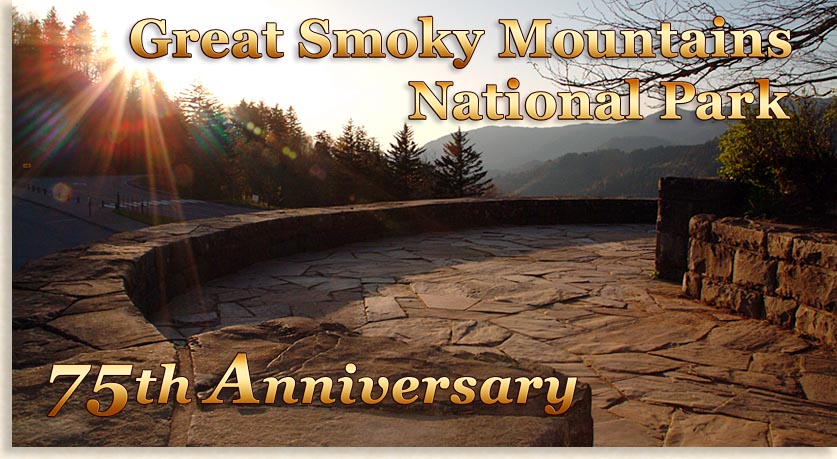 Jewel of the East
Jewel of the East
"It is good and right that we should conserve these mountain heights of the old frontier for the benefit of the American people." President Franklin D. Roosevelt |
Some people find the economic value of gemstones to be incomparable to other valuable commodities, while others might view them as a powerful talisman or a personal attribute to their individuality. Often received as a gift, gems can represent a token of love or devotion. Ladies fondly see them as precious possessions, adornments to their fashionable wardrobe, accenting their natural beauty.
Either way, gems and jewels often have a captivating appeal when presented in a quality setting or displayed with other finely cut gemstones on a velvet cloth. Yet to the naked eye a jewel in the rough is more often missed or overlooked by those who don't recognize the potential in its raw state. It takes a trained, skilled eye to know when they have found a "diamond in the rough," or any other gemstone for that matter. To bring out the true beauty of a rough stone it must be fashioned through a process of tumbling to smooth the stone, then it is precisely cut and polished into an object of beauty, a prized possession.
Such was the challenge when the first National Park in the eastern United States was strongly proposed at the turn of the 20th century. Amongst the vast eastern landscapes of wilderness forest lands, began a quest to find that one truly unique tract of natural "beauty in the rough" that could be fashion into a great outdoor gemstone for all to enjoy, a symbolic national treasure adorning a young nation that was growing quickly and prospering abundantly.
Finding the perfect location for this first eastern National Park was no easy task for the government and conservationist to accomplish. This token parkland, a symbol of our magnificent natural landscape would need to distinguish our greatness as a nation, honoring our country's citizens and the posterity of the nation's future generations.

The year 2009 marks the "Diamond Anniversary" or rather 75th Anniversary of the creation of the Great Smoky Mountains National Park. A celebration of conservation and preservation of our wilderness lands, a gift to the nation for the people and by the people of this great country.
The biggest problem in establishing a new National Park in the eastern United States at the onset of discovery, lay in the fact that the majority of all lands east of the Mississippi River were in the hands of private ownership. The first national park, Yellowstone National Park was founded in 1891 in the western United States where vast tracts of lands were already the property of the U.S. Government. Forty-three years would separate the first national park in the west with the founding of the first national park in the east in 1934.
Politicians, conservationist and lumber barons were warring over every tree in the forest as to whether it should to be cut or preserved, yet when the dust storm settled it was the conservationist that prevailed and the Great Smoky Mountains National Park found its way into history.
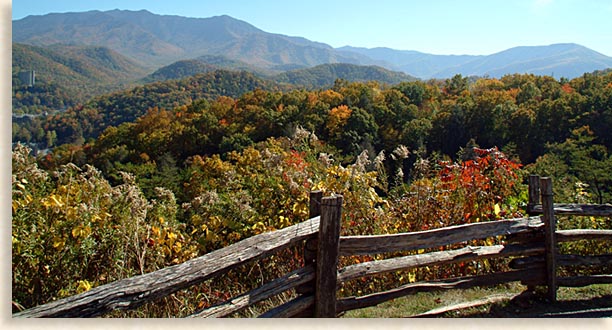
As the Great Smoky Mountains National Park celebrates its 75th Anniversary, the anniversary of one of America's most beautiful and majestic national treasures, we should all be aware that this particular national treasure came at a high cost, a renowned national park that almost never came into being. The cost was not only in financial value, but also the cost of persistent determination.
The Great Smoky Mountain National Park was authorized in 1929 by Congress and opened to the public in 1934 and has become the most visited national park in the nation. The parklands consist of a total of 520,000-acres hugging the state borders of eastern Tennessee and western North Carolina, along the largest single mountain range mass throughout the Appalachian Mountain chain.
The natural wonders within the Great Smoky Mountains National Park along with its delicate watershed, wildlife and precious resources of foliage and forest make this national park unique amongst it competing rivals from sea to shining sea. This exceptional national park is so biologically diverse that the United Nations Educational, Scientific, and Cultural Organizations designated the Great Smoky Mountains National Park an International Biosphere Reserve in 1976.
An estimate 10-million visitors venture into the park each year and find the Great Smoky Mountains National Park an experience unlike any other national park, although originally the Great Smoky Mountains wasn't the highest choice on the list when making a decision as to what land would be the first National Park in the eastern United States.
Where to Find an Eastern National Park?
The quest for establishing a new national park in the east United States would further the concept of preserving our nation's natural wonders along with the conservation of the national forest's wilderness lands in the east as well as in the west.
At the turn of the 20th century, vast forest lands in the eastern United States were being devastated by clear cut logging and mining operations that were leaving a wake of destruction in their path with no solution towards the restoration of the devastated landscape. Logging and mining were also destroying the natural watersheds along the mountain ranges of the eastern high country causing serious erosion which was resulting in widespread flooding in both the mountain valleys as well as in the lowlands outside of the mountain's perimeter.
The continued pursuit of logging and mining was intended to bring these natural resources of lumber and ore to a young and fast growing nation along with offering job opportunities to more remote rural areas that were impoverished.
These mountainous regions saw little to no currency to improve the quality of life for their families and communities. This need for an infusion of capital locally inspired mountain folks to welcome these lumber companies and mining operations into their beloved mountain lands with hopes of a better life.
Mountain lands were either bought outright or leased from landowners, many had held local property in their families for generations. Often, unethical means were used to obtain some of these lands, but that's another story. What started out as a good opportunity for local advancement, eventually turned into a nightmare that would hinder if not destroy the natural order of nature where they left their footprint.
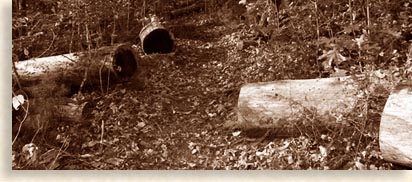 Within a generation, large tracts of mountain lands were laid to waste. Mountain folks began to recognize their once revered mountains were no longer the pristine forest they use to be, even the wild game they depended on for hunting disappeared with the forest along with other natural resources that were once plentiful.
Within a generation, large tracts of mountain lands were laid to waste. Mountain folks began to recognize their once revered mountains were no longer the pristine forest they use to be, even the wild game they depended on for hunting disappeared with the forest along with other natural resources that were once plentiful.
In nearly every case, once the landscape was striped of its natural resources by the lumber and mining operations, they would close up shop, pack up their belongings and move out of the area in pursuit of new opportunities to exploit and decimate other pristine lands all in the name of progress and profits. With no plans for restoring the mountain forest left those welcoming local mountain communities to fend for themselves, often with greater hardships to overcome than before the destructors of the natural landscapes arrived in their homelands.
The only exception of continued progress was the fact that in order to remove the natural resources from the mountain country, railroad lines had to be built throughout most of the mountains to transport the goods to market. These railroads would benefit the local communities and growing towns for generations to come.
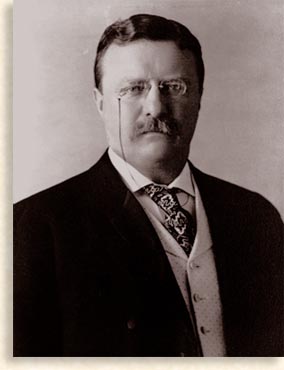 Establishing a national park in the east was like a call to the rescue and became a greater catapult to the idea of conservation, turning its mission into a necessity for preservation.
Establishing a national park in the east was like a call to the rescue and became a greater catapult to the idea of conservation, turning its mission into a necessity for preservation.
Though he did not begin the conservation movement, President Theodore Roosevelt was a leader in supporting the preservation and regulations regarding the harvesting of natural resource from our wilderness lands. As an enthusiastic outdoorsman, Theodore Roosevelt plainly saw what our country's natural resources and wonders had to offer to posterity and the lack of control the U.S. government had over harnessing our nation's natural resource. He made it his personal mission to influence the need to protect many of our wilderness lands throughout the western United States frontier and greatly succeeded in his efforts.
He then saw that more would need to be done in regards to safeguarding the forestlands in the eastern United States where the abuse of natural resources was running amok. A forest study regarding the present condition of the timber country of the Southern Appalachian Mountains was completed in 1901 and endorsed by President Theodore Roosevelt. He wrote a letter to the Secretary of Agriculture voicing his concern for the Great Smoky Mountains and the surrounding Southern Appalachian and Blue Ridge Mountain Province.
President Theodore Roosevelt's letter to the Secretary of Agriculture reads in part:
"In this region occur that marvelous variety and richness of plant growth which have led our ablest businessmen and scientists to ask for its preservation by the Government for the advancement of science and for the instruction and pleasure of the people of our own and of future generations. And it is the concentration here of so many valuable species with such favorable condition of growth which has led forest experts and lumbermen alike to assert that of all the continent this region is best suited to the purpose and plans of a national forest reserve in the hardwood region." The Southern Appalachian region embraces the highest peaks and largest mountain masses east of the Rockies. It is a great physiographic feature of the eastern half of a continent, and no such lofty mountains are covered with hardwood forests in all North America. For economic reasons the preservation of these forests is imperative. Their existence in good condition is essential to the prosperity of the lowland through which their waters run. Maintained in productive condition they will supply indispensable materials, which must fail with them, Their management und practical and conservative forestry will sustain and increase the resources of this region and of the nation at large, will serve as a invaluable object lesson in the advantages and practicability of forest preservation by use, and will soon be self-supporting from the sale of timber. The preservation of the forest, of the streams, and of the agricultural interest here described can be successfully accomplished only by the purchase and creation of a national forest reserve. The States of the Southern Appalachian region own little or no land, and their revenues are inadequate to carry out this plan. Federal action is obviously necessary, is fully justified by reasons of public necessity, and may be expected to have most fortunate results. With these conclusions I fully agree; and I heartily comment this measure to the favorable consideration of the Congress." |
Silver linings often have dark clouds surrounding them…the dark clouds that surrounded the President's plans for conservation and preservation were the lumber barons. When they found out about the president and his advisor's observations and concern for "wise use", they began stepping up the operation for exploiting the virgin forest of the Southern Appalachians.
Walls of defiance went up as matter of urgency took over the plans of the lumber companies as they began buying up 100's of thousands of acres of old growth forest before the government could impose strict regulations concerning the harvesting of lumber. A feeding frenzy devouring the forest took hold as there was no select cutting of timber, everything fell before the saw that could be reached, the only great obstacle that lay before the onslaught was transportation, and that became the job of the railroad. The building of the railroad throughout the Blue Ridge Mountains was often an engineering nightmare for construction and is another fascinating mountain tale that will be told by the Blue Ridge Highlander.
What started out as a plan for practical conservation turned into a race against time for the conservationist as well as the timber men. What was at stake were many of the wilderness natural wonders of the eastern United States and the remaining remnants of the of the old growth hardwood forest, many of these trees being hundreds of years old. These icons of the forest were falling under the shadows of the mountains nearly as quick as they could be reached. In a world of commodities and finance, the lack of regulations can only lead to self-destruction. For the most part it takes laws and regulations to shape a society's sense of fair development, where there are no rules only chaos can result.
A war was being wagged in Congress between the lobbyist and their political allies against the conservationist and their allies over who had the right to control the harvesting of the nation's natural resources. In the meantime the forest was falling at an alarming rate.
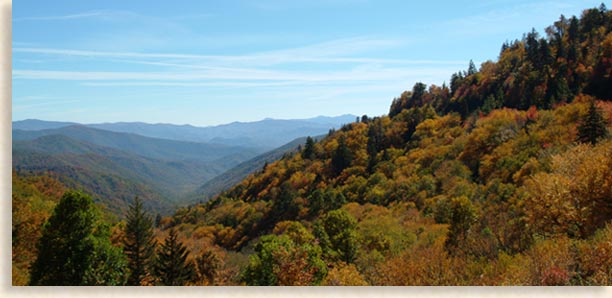
The Southern Appalachian Mountains during this time would see over 80% of its old growth hardwood forest fall to the lumber companies' demands for clear cutting of wilderness forests for lumber goods. What made matters worse were the mining operations in the region that chewed up the landscape or required their ore to be smelted. Thousands upon thousands of forested acres fell for the purpose of smelting ore which caused the fallout of acid rain that resulted in the local destruction of tens of thousands of more acres of forest that never even saw the timber saws or axes. Then there were all the wild forest fires, most often caused by logging and mining operations along with the widespread flooding due to excessive erosion. The sudden influx of industry and people were eating away at a region that saw only modest numbers of human inhabitants over the past millenniums.
Though mountains and forests seem larger than life, they are very fragile and don't understand how to quickly adapt to this type of destruction, unattended it would take generations to recover if possible. They would need great nurturing before they could begin to return to their natural order. It would be the national parks and forest that were responsible for that reversal of fortune.
Not all the lumber barons were necessarily bad guys; some didn't know any better being solely focused on delivering goods to the market while some others just didn't care.
Old Money and New Vision
George Washington Vanderbilt of Biltmore Estate could easily be considered a lumber 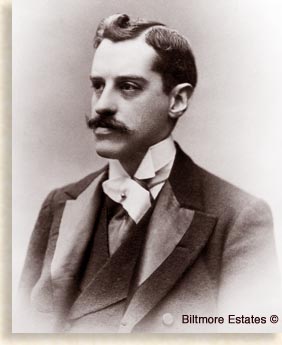 baron owning as much as 125,000-acres of mostly forested land outside the mountain city of Asheville, North Carolina in what would become a part of the Pisgah National Forest. Yet George was a visionary unlike many of his fellow lumbermen.
baron owning as much as 125,000-acres of mostly forested land outside the mountain city of Asheville, North Carolina in what would become a part of the Pisgah National Forest. Yet George was a visionary unlike many of his fellow lumbermen.
During his travels abroad, George W. Vanderbilt was impressed by the forest of Europe that had been seriously depleted by previous generation only to be reclaimed and reforested under the control of careful management. When Biltmore Estate was only a mere 8,000-acres strong, George hired a young experience American by the name of Gifford Pinchot who had previously studied the management of forestry in Europe. Pinchot encouraged George W. to buy as much of the surrounding mountain forest as he could afford bringing the total of his local land holdings to a record high 125,000-acres. Pinchot applied his learned skills to George's timber country yet after a short stay became interested in developing a national forestry policy for the U.S. Department of Agriculture. Gifford Pinchot went on to become first director of the U.S. Forest Service before becoming the Governor of Pennsylvania.
This neither ended George Vanderbilt's timber business or his concern for reforesting, he had witnessed first hand the effect of clear-cut logging and continued his pursuit for proper forest management.
Upon recommendation George hired a German forester to meet the challenge of his vast forested land holdings. Dr. Carl Schenck took on the task of rejuvenating the devastated forest and depleted soil and properly managing the harvesting of the remaining forest. Dr. Schenck was also instrumental in laying the foundation of what would become the "modern forestry of the Untied States." He helped in developing the Biltmore Forest School that opened the door to students in both classroom lectures as well as first hand experience in the outdoor laboratory of the Pisgah Forest.
To commemorate Dr. Carl Schenck's Biltmore Forest School, Congress agreed in 1968 to set aside 6,500-arces of the Pisgah National Forest's 250,000-acres for the newly named Cradle of Forestry in America, which is also a National Historic Site that is open to the public. The Visitor Center at the Cradle of Forestry has on display an interpretive history of forestry, through films, interactive exhibits and along two of its moderate paved trails are historic buildings where at times craft-persons demonstrate their skills. This impressive site is marked on the horizon by the bare mountain dome of Looking Glass Mountain just below the southern shoulders of the Blue Ridge Parkway and north of the town of Brevard, North Carolina. The Cradle of Forestry is a must see for nature lovers interested in how the national forest was saved, preserved and regulated for proper use.
George W. Vanderbilt was a great admirer of the Arts; he knew what a unique object of beauty the mountain forest was and what reforesting meant to further this nation's future demand for lumber goods. Much is owed to George W. Vanderbilt, Gifford Pinchot and Dr. Carl Schenck's vision and dedication to conservation.
After George W. Vanderbilt's untimely death, his widow sold 87,000-acres of the estate's timber country to help create the Pisgah National Forest.
Discovering a National Park
While the axes and saws were ablaze in the southern Appalachian Mountains, loggers were scattered across the wilderness forest yelling "timber!" the lobbyist and conservationist were shaking their fist in the air and pounding on tables before Congressmen.
By this time the western United States had dozens of national parks and monuments even though there were still no centralized federal agency that took responsibility for their overall operation.
It wasn't until the passing of the Weeks Act in 1911 that permitted the creation of a national forest in the east through the acquisition of private lands for public use. Even with the Weeks Act passed in Congress, buying up wastelands as well as remaining forest in the east by the U. S. Government was no easy task.
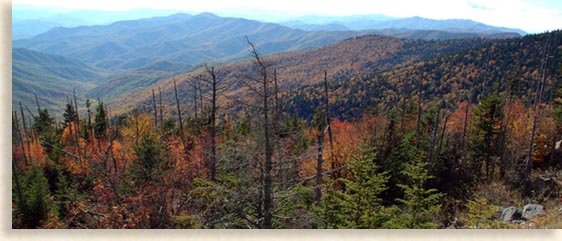
In 1924, the Secretary of the Interior appointed a five-person committee to study and explore regions of the southern Appalachian Mountains and to recommend a site for the creation of a new National Park in the eastern United States. The Great Smoky Mountains was only one name on the list of possible choices. Other choices on the list were the Shenandoah region and Roan Mountain of Virginia, Mammoth Cave in Kentucky along with Grandfather Mountain, Linville Gorge and Mount Mitchell in Western North Carolina. Mount Mitchell is the tallest mountain in the entire Appalachian Mountain chain exceeding Clingman's Dome in the Smoky Mountains by 41-feet. Mount Mitchell would later become North Carolina's first State Park.
After serious consideration of this list of choices for a national park, and having visited several geographical possibilities, the appointed committee of five met with a delegation from Knoxville, Tennessee while they were visiting Asheville, North Carolina. The committee was impressed by the presentation given by the delegation from Knoxville and agreed to move forward and explore the Smoky Mountains as a possible site.
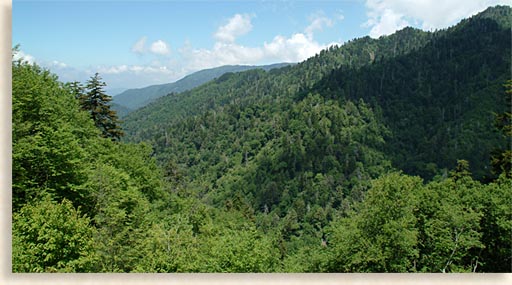
By the time the committee reached the Smoky Mountain region only two of the committee members were still fit enough for exploring the rugged country. This rugged wilderness region of possibilities lacked roadways let alone even primitive trails that could accommodate travel by horseback. Hiking and camping were the only way one could experience the true backcountry of the Smoky Mountains at the time.
The Great Smoky Mountains regions are still the native homelands of the Cherokee people. They called the Smoky Mountains, Kuwa'hi" or the Sacred Mountains, referring to the area now called Clingman's Dome. It is also where they believed the Great White Bear lived, ruling over the spirit world above the earth.
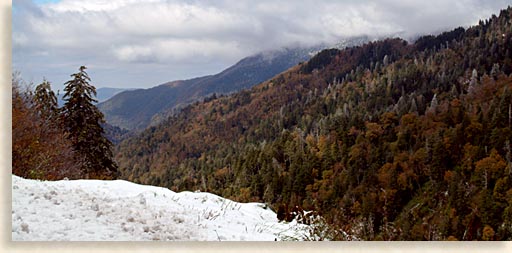
This was not the first time a national park was proposed in the mountain country of western North Carolina. Though North Carolina's U.S. Senator Thomas L. Clingman explored the Smoky Mountains in the mid-1800's; it wasn't until the 1880's that a local mountain resident, Drayton Smith of Franklin, North Carolina proposed a national park in the mountains. Also in the 1880's Dr. Henry Marcy of Boston recommended that a tract of land be put under state control, in the higher range as a park. In l893 the state of North Carolina's general assembly passed a resolution urging Congress to establish a national park in their beloved mountain country.
After these two hardy souls on the five-person committee completed their exploration of the Smoky Mountains they concluded that even though this mountains region was both unique and beautiful, its steep rugged terrain would be too difficult to develop into a national park for general public enjoyment and recreation. Not to mention, timber companies controlled 85% of the land that would be proposed for a national park in the Smoky Mountains region. There were also smaller tracts of property owned by 1,200 farmers as well as 5,000 small individually owned lots. As many as 6,000 claims stood in the way of the Great Smoky Mountains becoming a new national park and few were looking to sell their lands.
After much debate, the appointed committee finally agreed to recommend the Great Smoky Mountains as a possible second choice as a national park in the eastern United States with the Shenandoah region of the Blue Ridge as their first choice.
On the Tennessee side of the Smoky Mountains local prominent and steadfast supporters of a regional national park were not ready to give up on their dream of the park and believed the Great Smoky Mountains were worth saving. Together they formed the Great Smoky Mountains Conservation Association with their primary goal to protect the beauty and wilderness lands of the Great Smoky Mountains before the logging saws removed every tree on the mountains and destroyed the entire watershed.
In North Carolina, much is owed to author Horace Kephart of Bryson City who in 1904 came to the region to reclaim his health as an outdoorsman. Kephart wrote many letters to local newspapers all to the dissatisfaction of the local lumbermen who preferred him to be quiet while they continued their exploitation of the local natural resources.
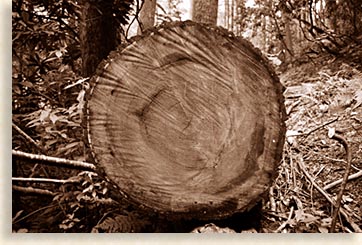 What now lay at stake and mostly in the far western reaches of North Carolina's mountain country were the last great stand of old-growth forest in the east. This region of western North Carolina is tall, with very steep mountain drainage, an area known to the Cherokee people as the narrows where great mountains have collided together creating a nearly impenetrable terrain. Giant hardwoods 150-feet tall and hundreds of years old lay captivate here in the backcountry of the Blue Ridge Mountain Province.
What now lay at stake and mostly in the far western reaches of North Carolina's mountain country were the last great stand of old-growth forest in the east. This region of western North Carolina is tall, with very steep mountain drainage, an area known to the Cherokee people as the narrows where great mountains have collided together creating a nearly impenetrable terrain. Giant hardwoods 150-feet tall and hundreds of years old lay captivate here in the backcountry of the Blue Ridge Mountain Province.
The only thing protecting these trees from the fast moving blades of the logging saw was the lack of heavy transportation equipment needed to get the trees to market, namely the railroad that was working diligently to lay rail in a most unforgiving mountainous region. The terrain slowed the timber cutting down but didn't stop it, due to man's persistent ingenuity and drive for profit. It was only a matter of time before 100% of the southern Appalachian Mountain forest was completely cut down and sold at market. Had it not been for those bold and dedicated citizens on either side of the Smoky Mountains standing firm on their goal to create a national park in their beloved mountains, nothing would have been done to save those ancient trees.
In one authored commentary Horace Kephart wrote:
"Why should this last stand of splendid, irreplaceable trees be sacrificed to the greedy maw of the sawmill? Why should future generations be robbed of all chance to see with their own eyes what a real forest, a real wildwood, a real unimproved work of God is like." |
There were still small tracts of old-growth forest scattered throughout the southern Blue Ridge Mountains, although most of it were in remote hard to reach mountain regions or on private property. The Smoky Mountains, still held over 110,000-acres of old-growth, mostly in its steepest most difficult reaches, but that wouldn't last long with the glean of sharp teeth logging saws watching and waiting, slowly making their way up the steep slopes.
The states of Tennessee and North Carolina along with the National Park Service felt developing a new national park in the region would not only preserve the land in jeopardy, it would also create badly needed jobs in the area and boost the tourism industry as well.
A New National Park is Born
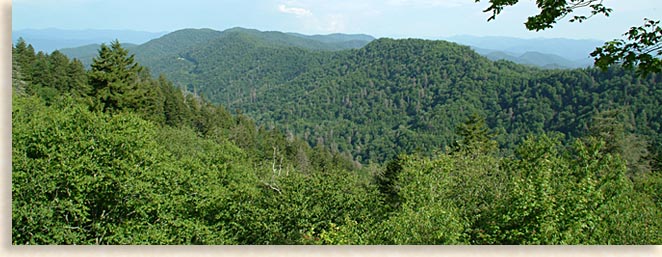
In 1925, it was the 110,000 plus acres of old-growth forest that mainly turned the key making the Great Smoky Mountains the primary choice for the eastern United States' first National Park.
The Great Smoky Mountains has the largest single mountain mass in the Appalachian Mountains, with a single mountain crest that stretches over 6-miles long at or above 5,000-feet high and twenty mountain summits higher the 6,000-feet, making them the rooftop of the eastern United States. All their natural assets outweighed all the other choices for the first National Park in the eastern United States. It was final, in May 1926; a bill was signed by President Calvin Coolidge to provide for the establishment of the Great Smoky Mountains National Park.
The only things standing in the way now was the financing needed to purchase the land, along with the fact that the timber companies were refusing to let go of their intent to exploit every bit of timber they could cut.
Both the states of Tennessee and North Carolina passed legislation appropriating the purchase of lands for a new national park. Fundraising campaigns began collecting donations from all ages; even school children donated nickels and dimes to buy the new park. In 1928, John D. Rockefeller Jr. issued a grant through the Laura Spelman Rockefeller Memorial Foundation and donated a $5,000,000 match fund for purchasing the new national park. Later the Memorial foundation donated even more money to help finalize the purchase.
As fifth cousin of President Theodore Roosevelt, the newly elected President Franklin D. Roosevelt was now at the helm, standing up to Congress as they repeatedly defeated the bills to allocate money for the new parklands. He countered their defeats by issuing an executive order allocating $1,550,000 in funds authorized for the Civilian Conservation Corps, a civilian army of man-power and engineers which was created during Great Depression through President Roosevelt's New Deal plan. Altogether, during this time in our nations greatest financial crisis, a total of $12,000,000 was collected to purchase the park for the people of this great nation. That says a lot for people of this nation when monies were so scarce and times were so hard.
Timber companies owned land from the valley floors to the summit of Clingman's Dome at 6,643-feet above sea level. The timber companies fought the sale of their profit making industry with every ounce of their fiber. After lawsuits and trials the timber companies were required to sell their lands often receiving top dollar for their investments. Colonel W. B. Townsend of the Little River Company held 86,000-acres that he had to sell. The Champion Fiber Company (largest paper manufacturer at the time) was required to sell 92,000-acres of its four large parcels of land in the Smoky's to accommodate the purchase of the new national park.
By the time all the land for the new national park was purchased it was estimated that as much as two-thirds of the Great Smoky old-growth forest had been over logged or even burned due to the ambitious lumber barons' mill operations.
In 1934 the Great Smoky Mountains National Park was officially established and opened to an awaiting public, and like a diamond in the rough it took an imaginative eye to see the incredible potential the Great Smoky Mountains National Park had to offer as the First National Park in the Eastern United States. Turning it into a national treasure for public use and enjoyment was the next step.
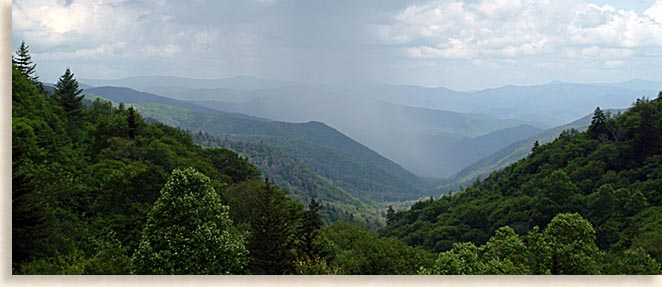
National Parks unlike National Forest are protected from any selling of their natural resources; it must continue to remain in its natural state. This newly established park was to be restored and reforested bringing the natural order back to a state of wilderness land. The steep rugged terrain of the Great Smoky Mountain is a natural protector against encroachment from the outside world. There are regions within the national park that have rarely or never seen a footprint from mankind, only the most popular areas of the parklands that were developed for public use see much wear and tear on the landscape of the 520,000-acre park.
The Smoky Mountains National Park is considered both a valuable and fragile biosphere. Today this national park claims 110,000-acres of old-growth forest, 1,600 species of flowering plants, 300 different kinds of mosses, 200 varieties of flowering plants, 60 species of furry mammals including one of the largest populations of black bears, 200 varieties of birds, 38 species of reptiles, 27 different kinds of salamanders, 48 types of fresh water fish and 12 species on the endangered list. Along the Smoky Mountains watershed there are roughly 730 miles of fish-bearing streams, 1,300 miles of tributaries and more waterfalls than can be counted. Bordering the southwestern edge of the National Park is Fontana Lake and Dam, the largest man-made lake in Western North Carolina.
Marked trails crisscross the parklands with the renowned Appalachian Trail crossing the highest ridges from one end of the National Park to the other. Preserved historic community settlements like Cades Cove and the Cataloochee Valley display relics of everyday life for mountain folks who live in these remote and hidden valleys and coves. The Roaring Forks Motor Nature Trail within the park's boundary will lead you from the popular tourist town of Gatlinburg Tennessee right into a the past along its historic tour.
The Sugarland's Visitor Center at the Tennessee entrance to the National Park is named after the abundance of sugar maple trees in its valley at the western foot of the Great Smoky Mountains near the historic town of Gatlinburg. Here Park Rangers welcome visitors with a short film, printed information and camping permits. The Park Rangers can also tell you about their Ranger Led Programs offered by the Great Smoky Mountains National Park. The Visitor Center is opened throughout the year with shorter hours in the winter season.
The Oconaluftee Visitor Center and Mountain Farm Museum are located at the eastern entrance of the park next to the southern access of the Blue Ridge Parkway and the town of Cherokee, North Carolina home of the Qualla Boundary of the Eastern Cherokee Nation. The Mountain Farm Museum has a collection of old building and homesteads that were moved from other locations throughout the park in the early 1950's to their new location in order to create an open-air museum for public self guided tours. The Oconaluftee Visitors Center named after the river that runs through it offers exhibits depicting wildlife in the park as well as telling the story of the hardy pioneers and loggers who lived in the area, along with informative pamphlets and friendly Park Rangers to answer your questions. Visitors Center is opened throughout the year with shorter hours in the winter season.
There are numerous other historic and natural attraction within the park. Information regarding these sites and trails can be found at both the Sugarlands & Cades Cove Visitor's Center and the Oconaluftee Visitor Center of the National Park as well as their website.
The CCC, Civilian Conservation Corps, was a work force formed by the U.S. Government during the great depression. The CCC developed a major part of the Great Smoky Mountains National Park by building roads and bridges, and cutting tunnels through solid rock, they also built buildings and structures out of raw materials using exceptional stone masonry skills which are still in use today.
The CCC blazed and cleared hiking trails, and reforested the bare landscape, altogether building and creating an infrastructure that has become a historic legacy to their hard work and dedication throughout the Southern Appalachian Mountains.
The CCC also lived and worked in these rugged parklands from 1933 to 1942 when WWII took center stage and caused the program to shut down. Yet what they left behind and how it was further developed has become many of the main attractions to park visitors.
The park has available to outdoors enthusiast, 10 developed campgrounds with a total of 1,000 campsites, plus over 100 backcountry campsites and shelters for the more roughing-it backpackers.
There are 800-plus miles of trails available for hiking, including 70-miles of the over 2,100-mile Appalachian Trail. For the equestrian lovers, there are 4 horse-riding stables and miles of horse trails within the national park.
There are 80 historic structures, including log buildings, churches, schoolhouses, barns, and working gristmills available for touring. Not to mention all the stone structures built by the CCC.
The park contains 384 miles of roadway for scenic driving opportunities. Routes to the most popular sections of the park are paved yet much of the 384 miles are park maintained unpaved forestry roads.
The park's official claim is that 95% of the park is forested with 25% of that figure being old growth forest. It is likely the largest shade covered national park in the nation.
Since its establishment the Great Smoky National Park is under the control of the National Park Service, and personally under the guardianship of those friendly, helpful and informative Park Rangers.
The Great Smoky Mountains National Park offers numerous family-friendly Ranger Led Programs from late spring through October along with a kids program and other events throughout the seasons when the park is open to the public.
The Great Smoky Mountains National Park is opened 24 hours a day, 365 days a year. Snowfall and icy roads cause the some park roads to shut down. To check for road closure for the Newfound Gap Road during the winter season call 865-436-1200, being a main artery over the mountain it remains open as long as it is passable.
The Crown Jewel
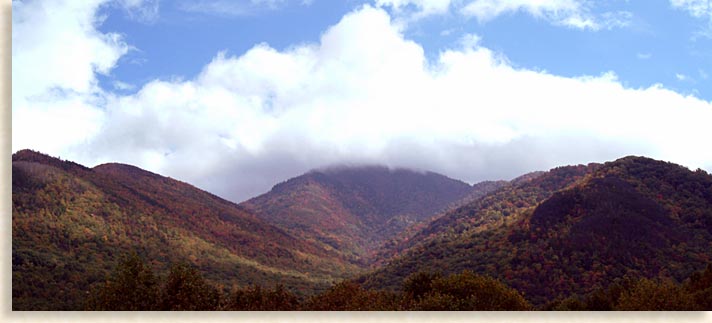
Nearly 10,000,000 people visit the Great Smoky Mountains National Park each year, making this the most visited of the 58 national park in the United States. Following popularity in its numbers of visitors annually are, the Grand Canyon National Park as number 2, Yosemite National Park as number 3 and surprisingly coming in as number 4 is Yellowstone National Park.
One of the reasons the Great Smoky Mountains National Park has been so popular is its ideal location in the heavily populated eastern United States. Though it's the park's own natural wonders and beauty that have sustained its popularity throughout its history, it's the outer perimeter of the national park that continues to add to its popularity.
Tourism Mecca's like Gatlinburg and Pigeon Forge Tennessee and the town of Cherokee North Carolina, home of the Eastern Band of the Cherokee people lay in the main outer gateways into the Great Smoky Mountains National Park. These towns have become so popular that they have become a destination themselves, with the Great Smoky Mountains offering a magnificent backdrop to the towns' own popularity.
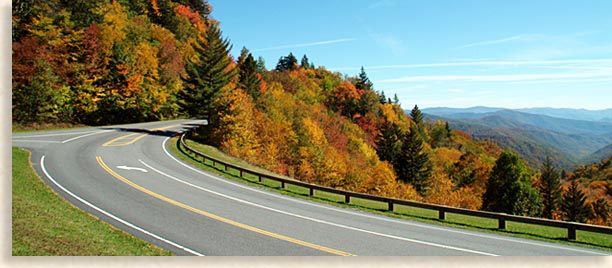
Not surprisingly though, the most popular destination within the 520,000-acres of parklands in the Great Smoky Mountains National Park is a narrow ribbon of paved real estate approximately 30 miles long that dissects the national park from north to south, the scenic Newfound Gap Road. Much of the financial support raised for this national park in the Smoky Mountains came from the promise that a trans-mountain road would be built connecting the two states in order to improve the struggling depression-era economics in the region.
The scenic Newfound Gap Road follows along US 441 through the national park offering the most stunning vistas of the national park's mountaintops, majestic coves and river valleys below. The scenic Newfound Gap Road scales the mountain slopes along either side of the state line, gradually gaining altitude towards one of the highest points along the massive Great Smoky Mountain range.

The scenic roadway passes through tunnels and does a loop over itself in one area where the previous roadway was too steep for some vehicles to climb or descend. All the while Newfound Gap Road follows along two rivers cascading down each side of the mountain range to its summit gap, the West Prong of the Little Pigeon River on the Tennessee side of the national park and the Oconaluftee River along the western North Carolina side of the park.
Along this scenic route you'll find, historic sites and places of interest, popular trail access along with "quiet walkways." These special "quiet walkways" are short trails about 1/2 a mile long.
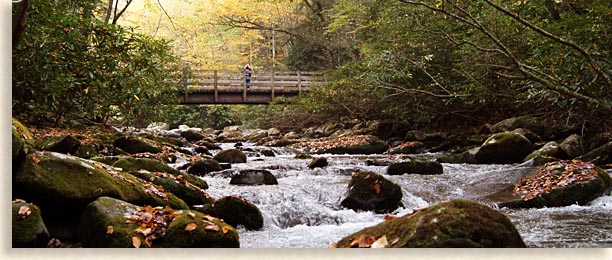
Popular geological wonders like the Chimney Tops and the Alum Cave Bluffs trails are accessible from the scenic roadway. There are picnic and camping areas along with numerous pull offs and parking areas featuring overlook vistas of the parklands.
The two most outstanding views of the park are at Newfound Gap at 5,048-feet and Clingman's Dome, the highest point in the park at 6,642-feet.
You can access Clingman's Dome Road along the scenic Newfound Gap Road at Newfound Gap. This paved 7-mile spur road follows the ridge top through a spruce-fir forest offering mountain and valley views to the south. At the end of the road there is a large parking area and overlook area just below the summit of Clingman's Dome. A 1/2 mile paved moderate trail leads to a 45-foot tall observation tower above the treetops that offers a 360-degree view of the entire 520,000-acre national park. Some visitors might consider this trail a little steep at spots, although visitors of all ages by the ten's of thousands, make the worthy hike each year.
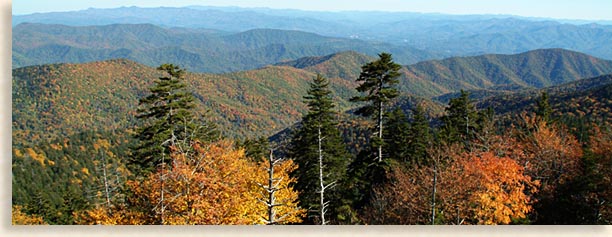
The Appalachian Trail passes along the ridge top just below the observation tower. The ridge top here divides the states of Tennessee and North Carolina. On a clear day you can see 7-states from this outstanding vantage point atop the tower making it well worth the walk. On a low altitude cloudy day or a foggy day, I would take a pass on the hike to the tower, yet when the weather is great it's a must see. I recommend a jacket for this part of the adventure; it's always chilly or windy even on the hottest days of summer at this altitude.
Newfound Gap and the Dedication
Although Clingman's Dome offers the greatest views of the park, my personal favorite and I'm sure many others is the Newfound Gap itself. Newfound Gap stands at 5,048-feet above sea level. It was discovered in the 1850's as a lower gap than the ancient Indian Gap previously thought to be the lowest access over the massive mountain range. A wagon road was constructed over Indian Gap to originally connect the Tennessee River Valley and the mountain and valley interior of North Carolina's Blue Ridge Mountains, the road has since been abandon.
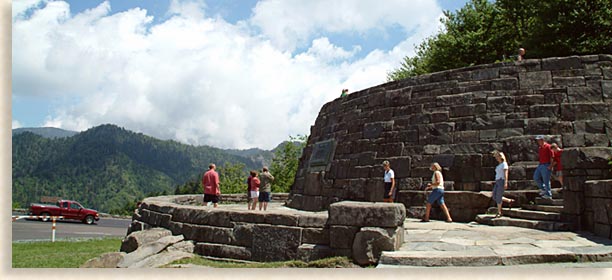
A large parking area sits on the mountain gap with breathtaking views into both the Tennessee side of the park as well as an outstanding view into the high mountain country of North Carolina. The Newfound Gap hugs both state lines here as well as the Appalachian Trail that cuts through the gap parking area. From the overlook along the North Carolina side of the gap you can look down and see parts of the Newfound Gap Road as it makes its steep journey up the eastern mountain slope. Public restrooms are available at the gap, a real and appreciated treasure here in this vast wilderness of steep mountains.
The Blue Ridge Highlander's favorite feature lies here on top of the Newfound Gap next to the parking area, the Rockefeller Memorial. This historic and most captivating stone block structure is divided in half by an imaginary state line. It is a memorial monument and most fitting to those who made this incredible national park a reality. The Rockefeller Foundation contributed $5,500,000 of the $12,000,000 collected to buy the parklands from private ownership. An old engraved metal plague mounted on the front of the memorial wall reads.
FOR THE PERMANENT ENJOYMENT THIS PARK WAS GIVEN |
Once the memorial was completed, along with the newly constructed Newfound Gap Road, President Franklin D. Roosevelt stood with one foot on each side of the state line and dedicated the Great Smoky Mountains National Park to the people of the United States. The day was September 2, 1940, likely the most memorable day in the park's history. Nearly 6-years had passed since the Eastern United States First National Park was officially established; yet it is that 2nd day of September in 1940 that stands in infamy as the new National Park's finest hour.
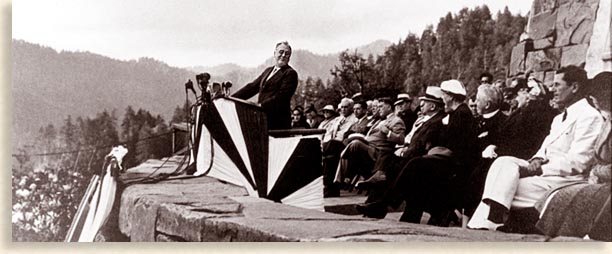
Standing upon the platform of this memorial that fateful day, the President delivered a powerful message not only to the guests attending, but also to the entire country as he dedicated the new National Park and spoke on the importance of conservation. His passionate speech drew upon his concern for both the American people and the world at large. Our inevitable involvement lay ahead in a war that would consume the entire world, World War II.
The public relations department at the Great Smoky Mountains National Park has kindly provided the Blue Ridge Highlander with not only photos of President Franklin D. Roosevelt dedication but also his historic speech in both written and audio format. The speech is laced with words of praise for the establishment of the new National Park, and the pioneering spirit of the American people, as well as our blessings as a free nation and why we should protect and conserve these beautiful mountains for posterity.
Much of the lengthy speech contains words concerning the growing war in Europe and our nations necessary involvement. Standing at the podium upon the mountain crown of the Great Smoky Mountains. The president used this event to drive home a message to the nation that the threat of our very freedom was at stake. Not long after the speech, the United States would declare its commitment to the war effort.
Having both the speech in written and audio form, the Blue Ridge Highlander has taken the liberty of editing out many of the paragraphs in the written copy referring to the growing concerns of war, in keeping to the theme of this historic speech we kept the relevant content referring to the celebration and dedication intact focusing on the Great Smoky Mountains National Park and the everlasting spirit of the American people.
We also felt it was necessary to include at the end of this feature Highlander story the actual audio of President Roosevelt's speech in its entirety. We encourage our readers to listen to this passionate historic audio that they may sense in these latter days a time in our history when our nation was torn between the pacifist approach and the courage to face the threat of our enemies' head on. The audio speech is well worth your time invested; reaching back in time and hearing the voice of President Franklin D. Roosevelt's is a cherished part of history and it is a great pleasure for the Blue Ridge Highlander to present it to our readers on behalf of the National Park Service.
The following is the speech President Franklin D. Roosevelt presented in part dedicating
the Great Smoky Mountains National Park...The Path Not Taken...
"Here in the Great Smokies, we have come together to dedicate these mountains, streams, and forests, to the service of the millions of American people. We are living under governments that are proving their devotion to national parks. It is good and right that we should conserve these mountain heights of the old frontier for the benefit of the American people. But in this hour we have to safeguard a greater thing: the right of the people of this country to live as free men. Our vital task of conservation is to preserve the freedom that our forefathers won in this land, and the liberties that were proclaimed in our Declaration of Independence and embodied in our Constitution. In these centuries of American civilization, greatly blessed by the bounties of nature, we succeeded in attaining liberty in Government and liberty of the person. In the process, in the light of past history, we realize now that we committed excesses, which we are today seeking to atone for. We used up or destroyed much of our natural heritage just because that heritage was so bountiful. We slashed our forests, we used our soils, we encouraged floods, we over concentrated our wealth, we disregarded our unemployed—all of this so greatly that we were brought rather suddenly to face the fact that unless we gave thought to the lives of our children and grandchildren, they would no longer be able to live and to improve upon our American way of life. In these later years we have tried sincerely and honestly to look ahead to the future years. We are at last definitely engaged in the task of conserving the bounties of nature, thinking in the terms of the whole of nature. We are trying at least to attain employment for all who would work and can work, and to provide a greater assurance of security throughout the life of the family. From hard experience we know that the process is a long one, but most of us realize that if we can continue our effort without serious setbacks, the ideals of the American way of life can and will be attained by working everlastingly for the good of the whole and not for the good of any one privileged group. But there is a second danger—a danger from without. I hope, for example, that one hundred years from now the Great Smoky National Park will still belong in practice, as well as in theory, to the people of a free nation. I hope it will not belong to them in theory alone and that in practice the ownership of this Park will not be in the hands of some strange kind of Government puppet subject to some strange kind of an overseas overlord. I hope the use of it will not be confined to people who come hither on Government specified days and on Government directed tours. I hope the trees will not be slaughtered by the axe in order that a Government may conduct wars of aggression against other nations. I hope that roads and paths and trails will still be built in the cause of the liberty of recreation, and not confined to the ulterior purposes of a war machine controlled by an individual or by an oligarchy. But to conserve our liberties will not be easy. The task will require the united efforts of us all. It will require sacrifices from us all. What shall we be defending? The good earth of this land. our homes, our families-yes, and far more. We shall be defending a way of life which has given more freedom to the soul and body of man than ever has been realized in the world before, a way of life that has let men scale whatever heights they could scale without hurting their fellows, a way of life that has let men hold up their heads and admit no master but God. It is our pride that in our countrymen are free to differ with each other and with their Government and to follow their own thoughts and express them. We believe that the only whole man is a free man. We believe that, in the' face of danger, the old spirit of the frontiersmen that is in our blood will give us the courage and unity that we must have. We need that spirit in this hour. We need a conviction, felt deep in us all, that there are no divisions among us. We are all members of the same body. We are all Americans. The winds that blow through the wide sky in these mountains, the winds that sweep from Canada to Mexico, from the Pacific to the Atlantic—have always blown on free men. We are free today. If we join together now— men and women and children -to face the common menace as a united people, we shall be free tomorrow. So, to the free people of America, I dedicate this Park." President Franklin D. Roosevelt |
In the spirit of that great day, the Great Smoky Mountains National Park is planning a special 75th Anniversary rededication of the park at the Rockefeller Memorial site at the Newfound Gap on September 2, 2009. Due to the limited space along the narrow ridge gap attendance will also be limited. An invitation has been extended to our currently elected President Barack Obama. If the President's schedule permits, he will be the first President in office since Franklin D. Roosevelt to visit the most popular national park in the National Park System. This special rededication event will be supplemented by live broadcasts that will be screened for a broader audience in venues located in or near the Park in gateway communities.
Other events created by the park and neighboring gateway communities for the 75th anniversary are scheduled throughout the 2009 season and are available on the Blue Ridge Highlander Event Calendar. On that calendar you will also find a three-day series of special "Anniversary Weekend" events occurring June 13-15. The first event June 13, will be the Knoxville Symphony Orchestra (KSO) performing in Cades Cove, and will be reminiscent of its performance during the Park's 50th anniversary. For more information concerning this and other park anniversary events you can also check out the special Great Smoky Mountains National Parks special 75th Anniversary website. A link to the site will be provided at the end of this feature story.
There's a Spirit that Shines
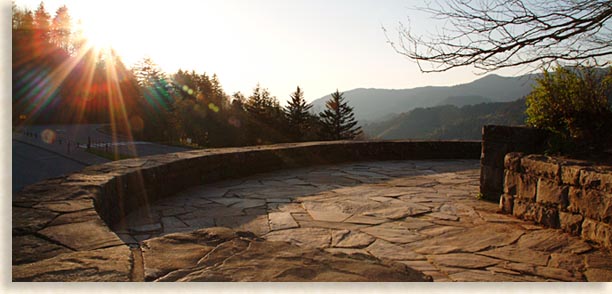
Mrs. Highlander and I visit the Great Smoky Mountains National Park often throughout the year. We have the privilege of living about an hour's drive from the southern gateway to the park in western North Carolina.
It's always a joy for us to access the park no matter what the weather is like except when its closed due to ice and snow. Each visit demonstrates a different character of the nation's park we hadn't noticed before. Some of our visits are designed to explore regions of the park we have yet to experience gathering photos information and adventures for future tales. Often our destination is to just reach the other side of the mountain for whatever reason, it's also a great way to release stress and change your frame of mind by getting back to the basics. No matter the reason, the opportunity to cross the wilderness lands of the national park are always a joy to Mrs. Highlander and myself.
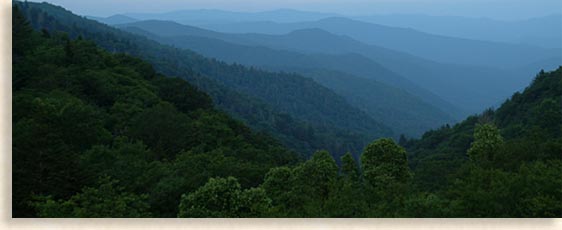
Crossing the park along the Newfound Gap road in the dark of night has a mysterious feel to it, offering a sense of an otherworldly journey that takes us into the aloneness of the unknown. The journey takes about an hour, and the middle of the night traffic is nearly non-existent. This is a time to meditate and contemplate the wonders that lie beyond the beams of your headlights as you keep your eyes firmly on the road ahead until you emerge from the park on either side and enter the gateway communities' fully lit thoroughfare, as the towns lie quietly sleeping through the night.
As I mentioned earlier the memorial that lies in the heart of the Newfound Gap is one if not my most favorite sites in the park and the most visited site in all the Great Smoky Mountains.
I have visited the gap in the springtime when the bulbs on the trees are beginning to flower and winter seems to be finally ending, yet from that same high point you can see the valley lands below which are bursting with full life and heading towards summer.
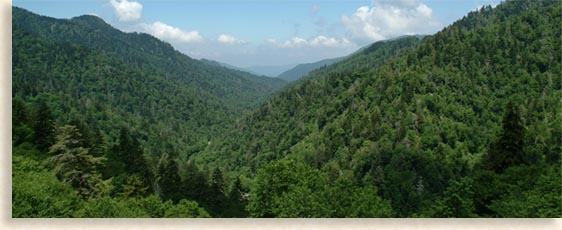
I have visited the gap site in the summertime when the high mountain rainforest has taken full charge of creating a jungle like atmosphere within this remote region of the eastern United States.
I have visited the gap in the fall when so many visitors flock there to witness the wonders of nature as it turns from an emerald forest into a painter's palate of many colors. The brush's broad stroke of colors crossing the landscape exemplifies the glory of God and nature as the season announces the beginning of the closure to another year in time.
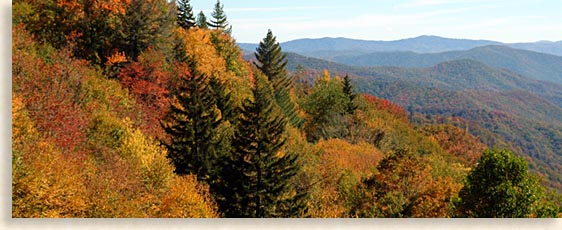
In the winter months the Great Smoky Mountains is mostly a no-man or women's land except for the winter campers and hikers who just can't get enough of the great outdoors along with the folks that are using the Newfound Gap Road to access either eastern Tennessee of western North Carolina. Even the black bears mostly sleep through the winter. Winters are fairly mild in the Southern Appalachian Mountains with good days to get outdoors. Though occasionally the weather brings heavy-snow to the higher elevation or ice on the roadways, which causes the park to close all the roads. There are several forestry roads in the park that are completely closed in the winter.
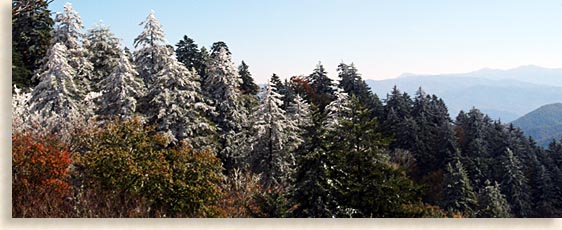
If you are fortunate enough to be in the mountains in mid-autumn when a freak snowstorm has arrived and the weather isn't cold enough to ice the roadways, the mixture of snow on the mountains and the colored leaves are indescribable. Even more awe striking is the fact that the valleys below will often be free of snow cover.
One year on a mid-October day Mrs. Highlander and I experienced one of those strange weather phenomena's. It wasn't the beauty of this event that made us smile and laugh so much. It was all those scenic drivers who were stopping at the gap and high-mountain overlooks, gathering snow and building small snowmen on the hoods of their vehicles parading up and down the Newfound Gap Road and Clingman's Dome Road proudly displaying their sculptures, grinning like goofy kids that couldn't help themselves. And when talk about that parade of vehicles and snowmen; you visitors from Florida know who you are.
With each visit Mrs. Highlander and I see folks walking about the trail, memorial, parking area and overlooks, marveling at the wonders of the Great Smoky Mountains National Park. Friendly folks have often journeyed long distances to this place of wonder from around the nation and from around the world. All standing here in the glory of the mighty hand of the great creator mesmerized by its magnificent and awe inspiring wonder.
I watch friends and traveling companions gather along the overlook edge smiling and joking, marveling at the wonderment beheld before them. I've watched family members of all ages posing and smiling before the camera with the backdrop of mountaintop memories encompassing their forms. I've watch bikers riding double on shining sharp bikes who made the long climb up the mountain to level ground, while lone bikers dismount their prized possession, grinning from ear to ear greeting everyone they meet with their eyes and a friendly smile. I've watched those in love wrap their arms about each other's waist, gazing out at the glory of it all, while young lovers take time to steal a kiss without regarding the audience that surrounds them.
Here in this high mountain gap, lies something unique, something you can't necessary see or touch, but its there just the same and evident to those who wish to experience it. There is a spirit here, a collective spirit of what's good in each of us. It is a spirit of a proud nation, and the spirit of a free land conjoined with the natural beauty of a mountain wilderness full of wonders that resonate across the landscape.
Standing Sentry
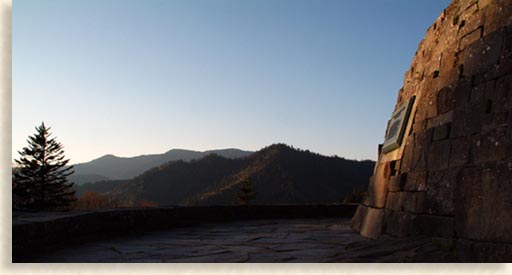
The memorial stands here like a lone sentry guarding the mountains and the gap with its ever-powering presence. Like a jewel in the crown of the Great Smoky Mountains themselves, it stands on the claim of a nation's freedom and desire to conserve and preserve what is good and natural for the enjoyment of all, present as well as posterity.
Though this mountain gap's natural essence does appear to resonate from the land and the heart of the people that visited this special place on earth, I tend to believe the spirit seems to posses the giant memorial itself.
Most will agree that the tower standing atop the pinnacle of Clingman's Dome has the greater view, yet it is Newfound Gap that holds the wonder of it all like an imaginary jewel studded chalice of gold and silver representing the priceless wealth of the Great Smoky Mountains National Park.
The two giant stone tiers on the Rockefeller Memorial is as much a monument as it is a memorial. A stage for dedication, a viewing balcony for all that surrounds it stately form. Walls and platforms of splendid stone laid masonry stands against the gap's rising summit; a curving stairway of stone blocks along the outer edge of the memorial seems to lead upward to a formless doorway to the heavens. A stone drinking fountain that is no longer in use on the memorial once offered the refreshing pure mountain water to early visitors of the park, offering a taste of the mountain's glory, a toasted communion with God and nature.
Ever since President Franklin D. Roosevelt stood here upon the memorial like a great explorer with one foot in each state, he claimed this wonderland for the National Park Service and the people of this nation. Welcoming those from foreign nations to come and witness the glory of what the American people had to offer in a land they both loved and revered.
The effort of those who dedicated their time, driven by a passion to reclaim this land from the tooth of the logger's saw, should be recognized and respected for their tireless efforts. The Great Smoky Mountains were worth fighting for, freeing this mountain land from the tyranny of the greedy saw, saving its forests, waterways and wildlife from extinction.
Though it started in the rough, the Great Smoky Mountains have become a fine cut gem with each facet of its mountain slopes, summits and valley coves, reflecting something entirely unique about this special National Park. It is no wonder the Great Smoky Mountains National Park is the most visited national park in the country, you only have to see it for yourself to understand the true value.
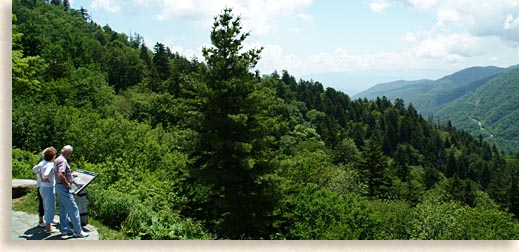
Special planned events have been created for the park's 75th "Diamond" Anniversary with an open invitation to the people of our great nation as well as the entire world to join them for their celebration in the great outdoors. A proud and honoring celebration to the rededication and preservation of the National Nark, making way once again for the commitment to the future of this natural wonder of mountains, forest, waterways and wildlife.
Superintendent - Park Ranger Dale A. Ditmanson of the Great Smoky Mountains National Park and his entire staff along with the gateway communities surrounding the immense Great Smoky Mountains National Park, welcome you to join them and all the events they have prepared for this special anniversary celebration, to share the genuine love and found admiration they have for this unique mountain wilderness land that has for generation been called, "the Great Smokies."
The Highlander
| for more info on the 75th Anniversary go to the official web site Great Smokies 75th |
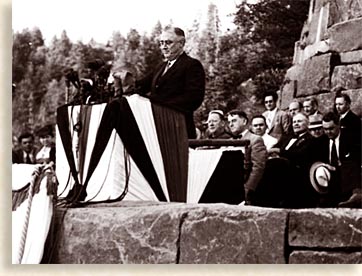 |
![]()
Sign
up for the Blue Ridge Highlander Newsletter, Messages from the Mountains
to find out first about our new feature stories, road trips and special offers
Your e-mail addresses will not be sold or given away to anyone.
Privacy
Policy
Interested in your business being on the Highlander, click here...
Let our visitors tell you about the Highlander...
Click the feathers to go to the Highlander site
map...

